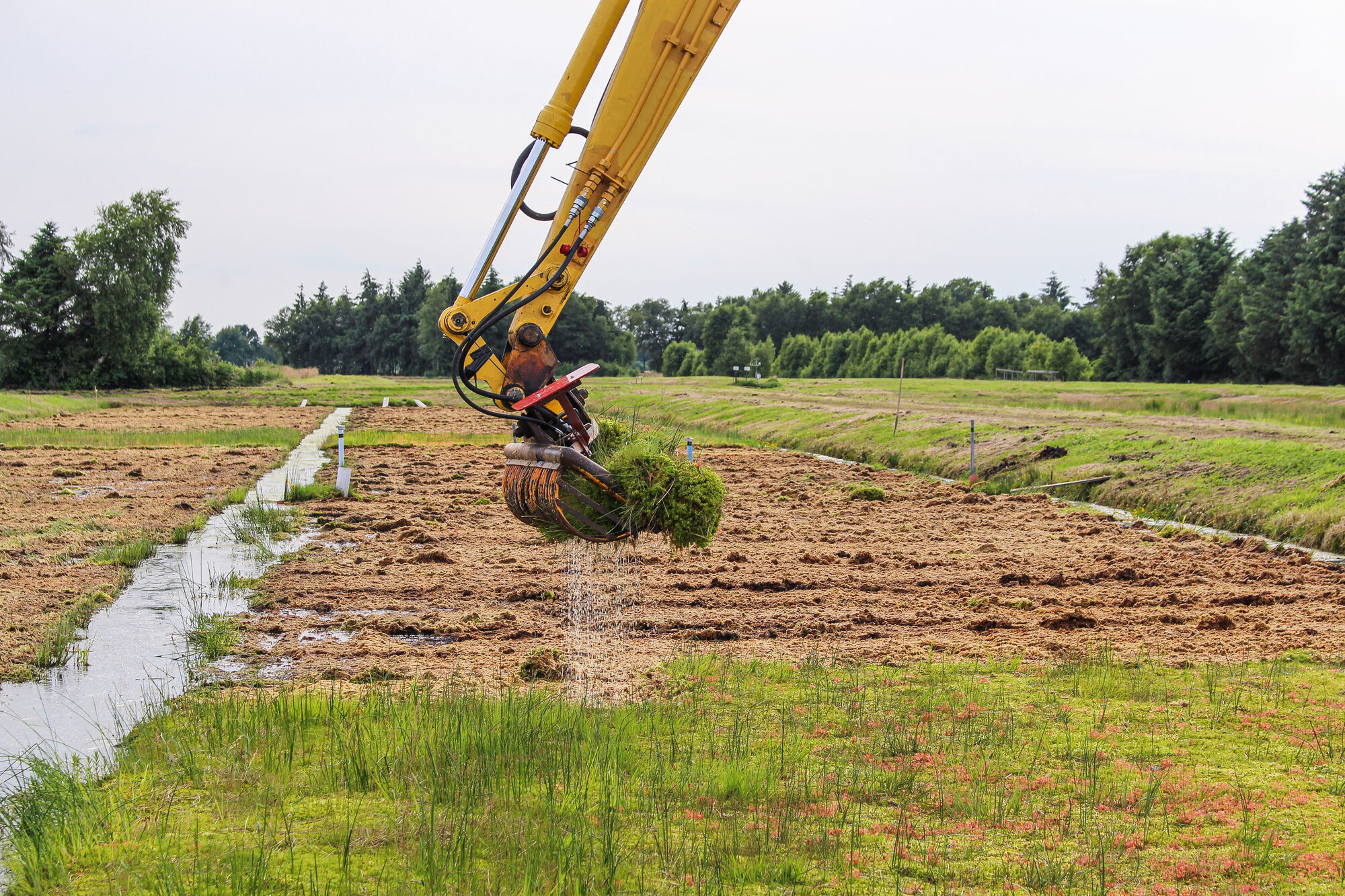In the article "Full-cycle greenhouse gas balance of a Sphagnum paludiculture site on former bog grassland in Germany", the authors Caroline Daun (University of Rostock, as of April, University of Greifswald) and Dr. Vytas Huth prove that wet cultivation (paludiculture) with peat moss reduces emissions by at least 20 tonnes of CO2-equivalents per hectare and year compared to grassland usage of drained raised bog soils, and by up to 85 percent if the cultivation system is improved. This was the first ever climatic assessment of this kind of use that stetched from the planting of the moss up to and including its harvesting. The data for this analysis was provided by a long-term field trial on peat moss paludiculture conducted by the University of Greifswald together with partners and the peat producer Moorkultur Ramsloh, owner of the cultivation area in the Hankhauser Moor in Niedersachsen. These trial areas for peat moss production turned out to be real carbon sinks: the remaining emissions from paludiculture came almost entirely from the causeways built from peat. If the causeway area is reduced to a minimum, the peat moss paludiculture only releases a total of 4-10 t ha-1 a-1 CO2-equivalents1, reducing emissions by up to 85 percent.
More suitable areas and more seeds are needed in order to achieve large-scale reductions of emissions through peat moss paludiculture. This is where MOOSstart comes in: A new three-year collaborative project on "Increasing yields and upscaling seed production and planting as an initial step for the cultivation of renewable peat moss biomass in paludiculture”, being realised by the Universities of Greifswald and Freiburg as well as the Anhalt University of Applied Sciences and the commercial partner Niedersächsische Rasenkulturen (NIRA). MOOSstart will advance the development of a procedure in which vegetative plant material can be multiplied under sterile conditions in a photobioreactor. The goal is to design and test a low-cost bioreactor. The project will also work on suitable technology for sowing the produced seeds and develop methods to increase crop yields. The researchers aim to make a contribution to climate-neutral peatland use and the substrate industry.
Background: paludiculture on raised bogs
When intact and wet, peatlands are among the world’s most crucial natural carbon pools and they are particularly important for climate protection. On the other hand, drained peatlands release large amounts of CO2. In Germany, 95 per cent of peatlands have been drained, causing 6 to 7 per cent of total greenhouse gas emissions. The only way to stop these emissions is to rewet the peatlands. Paludiculture makes it possible to continue cultivating the wet peatlands. The less nutritious and acidic soils of raised bogs can be used to grow peat moss. It can replace peat as a substrate raw material in horticulture and provide donor material for the restoration of raised bogs.
Further information
1 The two greenhouse gases methane (CH4) and nitrous oxide (N2O) are converted into CO2-amounts with the same climate impact so that the combined climate impact can be indicated more easily.
Link to the study
Daun, C., Huth, V., Gaudig, G., Günther, A., Krebs, M. & Jurasinski, G. (2023) Full-cycle greenhouse gas balance of a Sphagnum paludiculture site on former bog grassland in Germany. STOTEN, 877, 162943; https://doi.org/10.1016/j.scitotenv.2023.162943
MOOSstart [de]
Contact
University of Greifswald
Partner at the Greifswald Mire Centre
Dr. Greta Gaudig, greta.gaudiggreifswaldmoorde
Prof. Dr. Gerald Jurasinski, gerald.jurasinskiuni-greifswaldde
University of Rostock
Dr. Vytas Huth
Grassland and Forage Science
vytas.huthuni-rostockde

